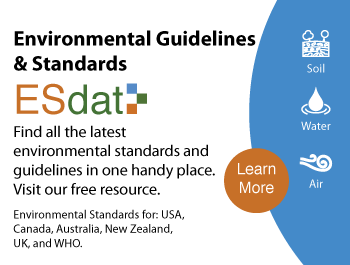Default Guidelines Values (DGVs) are developed according to risk assessment principles by using data derived from laboratory tests in clean water. The species sensitivity distribution (SSD) method is used in deriving DGVs for toxicants during water quality assessment. In circumstances where SSD is not applicable, the assessment-factor approach is used. It provides the best estimate of toxicant concentrations that exhibits no substantial adverse impact on aquatic ecosystems. The toxicants addressed include anilines, chlorinated alkanes, nitrophenols, chlorophenols, metals, and metalloids. DGVs are generally applied where more relevant guideline values are absent.
DGVs are used to determine whether there is a risk to community values regarding the use of such water during water quality assessment. DGVs provides different levels of species protection. Therefore, the application of DGVs is determined by the current or desired condition of the ecosystem. 80% or 90% species protection DGV is applied for highly disturbed systems, while 95% species protection DGV is applied for slightly to moderately disturbed systems. Consequently, 99% species protection GDV is applied for a high ecological/conservation value system.
The reliability of DGVs is determined by the methods used to derive it (SSD or assessment factor), type of toxicity data, number of species for which toxicity data is available, and a visual assessment of the fit of SSD to the toxicity data.
The guidelines apply for human use environmental values such as stock watering, recreation, and crop irrigation. It, therefore, protects water environments and allows for usage in an ecologically sustainable manner.
Default Guideline Values (DGVs) can be found On the ESdat website.
All compiled environmental guidelines and standards are shown. These are pre-loaded into ESdat Online.
ESdat is a single repository for storing, analyzing and reporting your environmental investigation and monitoring data. ESdat validates and imports data from laboratories, data loggers, field apps and spreadsheets. Users can filter and view data using the built-in graphing, mapping, tabulation, statistical and report generation tools. Increasing efficiency and confidence in the data are often cited as key benefits by organizations using ESdat.
ESdat Online delivers a highly cost-effective and efficient approach to store your ongoing monitoring environmental data, optionally with a historical data upload provided as a getting started service. ESdat Online is perfect if you want a cloud-based system that collates and reports your ongoing laboratory and field results.
ESdat Server provides the advantages of ESdat Online with the option of adding ESdat Desktop for data experts to upload their historical data, effectively interrogate the raw data being used within the database, and automatically launch and send data to other Desktop Applications such as Surfer, ArcGIS and Excel.
A variety of complementary products are also available to help with related work, such as sample planning and electronic Chain of Custody (LSPECS), offline field data collection or bore logging (pLog), production of bore logs (ESlog), public portals and customized reporting.

References
Australian Government Initiative (2022). Toxicant default guideline values for water quality in aquatic ecosystems. Retrieved from https://www.waterquality.gov.au/anz-guidelines/guideline-values/default/water-quality-toxicants
ANZ Guidelines for Fresh & Marine Water Quality – toxicant DGVs






